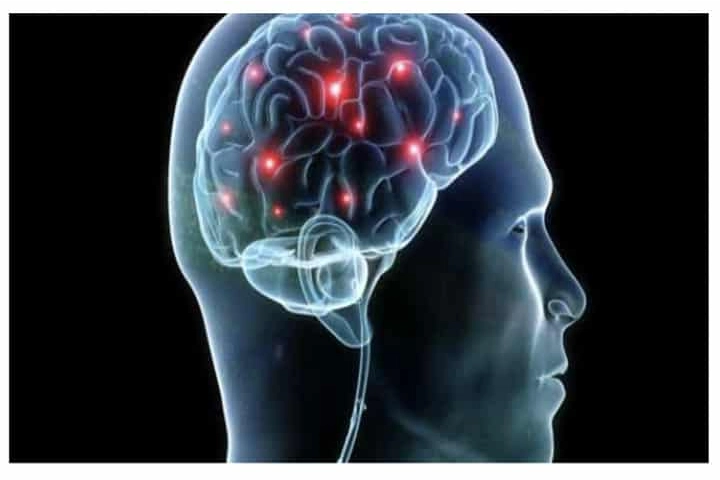

A team of neurobiologists have been able to spot out certain brain cells that died due to the Parkinson's disease and also what made them susceptible to death (Pic. Courtesy wikimedia commons)
<p>
<strong>Science is continuously striving to make headway in the medical field and find out how dreaded diseases work and what can be their cure. Neurobiologists Tushar Kamath and Abdulraouf Abdulraouf from the Broad Institute led a team that studied cells of the brain taken from persons who have died due to Parkinson&rsquo;s disease or dementia and juxtaposed them with those from unaffected persons as per a report in sciencealert.com.</strong></p>
<p>
The team was able to spot out certain brain cells that died due to the disease and also what made them susceptible to death. The &ldquo;highly susceptible&rdquo; found made them the prime target for therapeutic intervention while the research also brought into limelight how genetic risk plays a role in the disease.</p>
<p>
A neurodegenerative disease which is ongoing in nature &ndash; Parkinson&rsquo;s attributes include movements which are uncontrollable like tremors, difficulties in speech, and problems of balance that turn worse with passage of time. The reason for this is the harm caused to nerve cells that generate dopamine &ndash; a vital messenger that controls movements of the body and moods.</p>
<p>
<strong>Also read: <a href="https://www.indianarrative.com/science-news/why-amazon-tribes-suffer-less-from-alzheimer-s-disease-and-dementia-156707.html">Why Amazon tribes suffer less from Alzheimer&rsquo;s disease and dementia</a></strong></p>
<p>
This destruction of the neurons is a special feature of the disease. Interestingly, not all the cells die. Thus, the researchers got into action to set apart and map the individual neurons numbering in thousands from those people who died due to Parkinson or dementia with Lewy bodies. In this process, 22,000 brain cells were studied by Kamath and his team taken from 10 individuals who passed away due to Parkison&rsquo;s or dementia and eight from persons who had not been affected by any of two diseases.</p>
<p>
The researchers identified 10 specific subtypes of dopamine-producing neurons and in this one group stood apart as this was generally missing in the brains of people affected by Parkison&rsquo;s disease.</p>
<p>
Closer scrutiny yielded that this specific set of dopaminergic neurons were connected with the sharp increase in other neurodegenerative diseases. Significantly, the team was able to locate the exact region where these cells were found — in the underside of the substantia nigra pars compacta.</p>
<p>
Moreover, this subset of neurons had the highest number of genes that led to the risk of Parkinson&rsquo;s diseases, making them very vulnerable. Writing in their paper, Kamath and colleagues said the genetic risk factors for the disease might be acting upon <a href="https://www.sciencealert.com/scientists-pinpoint-exactly-which-brain-cells-die-in-parkinson-s-disease?utm_source=ScienceAlert+-+Daily+Email+Updates&amp;utm_campaign=697db81a39-MAILCHIMP_EMAIL_CAMPAIGN&amp;utm_medium=email&amp;utm_term=0_fe5632fb09-697db81a39-366100389" rel="nofollow">&quot;the most vulnerable neurons</a> that influence their survival&rdquo;.</p>
<p>
Even though Parkinson&rsquo;s disease and dementia with Lewy bodies are separate disorders they do share common traits, namely, loss of midbrain dopaminergic neurons, formation of clumps of proteins that are abnormal called Lewy bodies inside cells while those afflicted have the same triad of motor movement impairments.</p>
<p>
Highlighting these commonalities this study according to Ernest Arenas, who is a molecular neurobiologist at the Karolinska Institute &quot;provides valuable information on common alterations in these two diseases&rdquo;. He pointed that some disease-specific alterations may not have been detected and may have been under-represented due to the small number of people sampled.</p>
<p>
With the research helping in knowing about cells highly susceptible to Parkinson&rsquo;s and how they work, the scientists could now design them in the laboratory. This would enable them to investigate the genetic drivers of the diseases, look at the potential drug candidates and also look at the regenerative medicine for it.</p>
<p>
Summing up, Arenas remarked: &quot;This is a critical task, as our capacity to identify markers and actionable targets for [Parkinson&#39;s disease] will determine our capacity to develop novel therapeutics for this devastating disorder.&rdquo;</p>
<p>
Details of the research were published in Nature Neuroscience.</p>
<p>
<strong>Also read: <a href="https://www.indianarrative.com/science-news/years-ago-humans-first-domesticated-geese-and-not-chicken-new-study-159936.html">7000 years ago, humans first domesticated geese and not chicken – new study</a></strong></p>
Minister for Electronics and Information Technology Ashwini Vaishnaw said on Friday that the government is…
Renowned human rights activist and political analyst Amjad Ayub Mirza has expressed a strong denunciation…
As was widely expected, the Indian economy grew by 6.5 per cent in real terms…
World No Tobacco Day, marked annually on 31 May, addresses a major public health challenge--the…
Defence Minister Rajnath Singh, addressing officers and sailors onboard India's first indigenous aircraft carrier INS…
The leadership team from the Central Tibetan Administration (CTA) arrived in Tokyo to participate in…